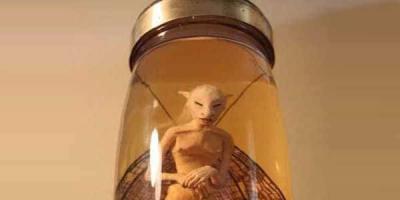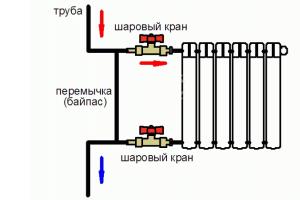Today, if a family is relatively small and can easily all fit around one large table, we hardly ever ask ourselves who is related to whom, because the family circle is quite limited. Really, what is there to understand: mother and father, brothers and sisters, grandparents and, of course, grandchildren. Of course, such family ties are not difficult to understand.
Centuries-old traditions
It has long been assumed that members of the same clan are united not only by blood, but also by common needs, traditions or interests. This has led to the fact that in these times of disunity and independence, it is often not possible to understand by what principles a circle of dear and close people is created. When a person forgets about his roots, practically getting rid of them, he gains a certain freedom. But it’s not for nothing that they say: “in order to stand, I must hold on to my roots.”
Family bonds

So is it really so difficult to decide who the wife’s sister is, or what kind of blood ties the brothers-in-law are connected with? Certainly not. In order to do this, it is enough to simply regulate the list of relatives, or even better, to draw up a family tree and trace it.

Of course, the situation becomes an order of magnitude more vague if there are many branches in the family tree, most of which appeared as a result of the merger of families. The most common example of this is, of course, marriage. Of course, everyone can easily understand who a husband, wife, father-in-law and mother-in-law or mother-in-law and father-in-law are. But the fact that there are such people in the family as a daughter-in-law, brother-in-law or brother-in-law puts many in a difficult situation, after which they ask the question: “Who is my wife’s sister for me?”, “What is the name of my husband’s brother?” etc. Of course, it is not so easy to compare such “titles” with real people.
This article is published specifically for people who are wondering who the wife’s sister is to her husband, or who the brother-in-law is.
What do you call your brother's wife? Wife's sister - who is this?
So, what kind of positions do the various representatives of the family acquire as a result of the merger of the two clans?
The wife's sister is called sister-in-law. If she is married, then it is her husband who is called the brother-in-law. The spouse's sister can be called sister-in-law or ash-in-law. In some cases, the brother’s wife is also addressed.
The newly-minted spouse is a son-in-law not only for the bride’s mother and father, but also for the wife’s sister or brother. Often representatives of two families, who have recently become relatives and have not yet fully mastered all the mysteries of the family tree, are embarrassed to ask who the daughter-in-law is. And here is the answer to the unspoken question: a daughter-in-law is the same as a daughter-in-law, that is, a son’s wife for his parents.
Who are brother-in-law and brother-in-law?

It also happens that a person has heard that there are such relatives as brother-in-law and brother-in-law, but cannot figure out exactly who they really are. Such details can simply fly out of your head. So, the wife's brother is called brother-in-law. The brother-in-law, in turn, is the husband's brother. So we looked at the circle of immediate relatives, and, as it turned out, it’s not all that complicated. It won’t be difficult to remember the list of relatives’ statuses.
What if we dig deeper?
We have dealt with the “titles” of our closest relatives, and now we can easily answer questions like “who is my wife’s sister for me, what is the name of my husband’s brother, who is my brother-in-law,” thereby demonstrating our knowledge of this issue. But it’s worth digging deeper to understand the more confusing, at first glance, family ties. Of course, there are still many different degrees of kinship that are quite rarely used, and therefore positions such as sister’s husband, brother’s wife, or wife’s sister are not the entire list of kinship ties that are worth remembering. For example, men married to two sisters are brothers-in-law. In turn, the spouses of two brothers can be called among themselves interlocutors (an interlocutor is the wife of a brother-in-law). If a son is born to a brother-in-law, that is, the wife’s brother, he is usually called Shurich. And the wife of the brother-in-law, the husband’s brother, may be called differently - a yatrovka.
Only family ties?
In conclusion, I would like to talk about one rather interesting experiment conducted by British scientists. They gathered a group of complete strangers and told some of them that they were distant relatives of each other. According to the results of the experiment, it turned out that those who were forced to think about kinship fully met their expectations: the participants began to communicate quite closely, and friendship began between them. The experimental subjects themselves received tremendous pleasure from communicating with each other, holding peaceful conversations in the “family” circle. Most of them reported that they had developed real family relationships, despite the fact that scientists did not confirm their words in any way. So maybe we, having gained an idea of what exactly we should call our family members, will begin to treat them at least a little warmer?
igor_kn very helpfully, it brought complete clarity to the question of who is who among the relatives.Father-in-law - husband's father
Mother in law- husband's mother
Father-in-law- wife's father
Mother-in-law- wife's mother
brother-in-law- Brother husband
Brother-in-law- brother-in-law
Sister-in-law- husband's sister
sister-in-law- wife's sister
Brother-in-law- sister-in-law's husband
Son-in-law- daughter's husband, sister's husband, sister-in-law's husband
Daughter-in-law- son's wife in relation to father
Daughter-in-law- brother's wife, son's wife for his mother, one brother's wife
towards another brother's wife; also used instead of daughter-in-law, sister-in-law, sister-in-law
Matchmaker- the father of one of the spouses in relation to the parents of the other
Matchmaking- the mother of one of the spouses in relation to the parents of the other
Grandfather (grandfather)- father of father or mother. Grandmother (grandmother) - mother of father or mother
great uncle- father's or mother's uncle. Great-aunt - father's or mother's aunt
Grandson, granddaughter)- son (daughter) of a daughter or son in relation to a grandfather or grandmother. Accordingly, a cousin’s grandson (granddaughter) is the son (daughter) of a nephew or niece
Nephew niece)- son (daughter) of a brother or sister (siblings, cousins, second cousins). Accordingly, the child of a cousin (sister) is a cousin nephew, a second cousin (sister) is a second cousin nephew
Great-nephew (niece)- grandson (granddaughter) of a brother or sister
Uncle (uncle, uncle)- brother of father or mother, husband of aunt
Auntie (auntie, auntie)- sister of father or mother in relation to nephews. Uncle's wife in relation to his nephews
Cousin- related by grandfather or grandmother to the children of their sons and daughters
Cousin- daughter of an uncle or aunt
Second cousin- son of a great uncle or great aunt
Second cousin- daughter of a great uncle or great aunt
Godfather, godfather- godfather and mother in relation to the godson's parents and to each other
First degree relationship
Father and son.
Father and daughter.
Mother and son.
Mother and daughter.
Second degree relationship
Grandfather and grandchildren
Grandmother and grandchildren.
Third degree of relationship
Great-grandfather and great-grandchildren,
Uncle and nephews
Aunt and nephews.
Fourth degree of relationship
Cousins and brothers,
Great-uncle and great-nephews (nieces),
Great-aunt and great-nephews (nieces).
Fifth degree of relationship
Great uncle and great nephew (niece).
Sixth degree of relationship
Second cousins and brothers.
When getting acquainted with the terms of kinship relationships, you should remember that the terms of consanguinity consist of keywords and definitions of the degree of kinship:
Grandmother, grandmother - mother of father or mother, wife of grandfather.
Brother - each of the sons of the same parents.
Bro, bro, bro, bro, bro - cousin.
Bratanna is her brother’s daughter, brother’s niece.
Brother - a relative in general, cousin or distant.
Bratych is a brother's son, brother's nephew.
Grandson - the son of a daughter, son, as well as the sons of a nephew or niece.
Granddaughter, grandson - the daughter of a son, daughter, as well as the daughter of a nephew or niece.
Grandfather is the father of the mother or father.
Dedina, grandfather - uncle's aunt.
Dedich is the direct heir of his grandfather.
A daughter is a female person in relation to her parents.
A son is a male person in relation to his parents.
Dsherich is his aunt's nephew.
Daughter's aunt's niece.
Uncle is the brother of father or mother. Aunt, aunt - sister of father or mother.
Thus, uncle and aunt are the brother and sister of the mother or father. “The aunt has a darling nephew, and the uncle has a niece,” notes popular wisdom.
A mother is a female person in relation to her children.
A father is a male person in relation to his children.
The father is the eldest in the generation.
Fatherlander, stepfather - son, heir.
Nephew is the son of a brother or sister.
Nephew and niece are the son and daughter of a brother or sister. Great-nephews are the grandchildren of a brother or sister. By the way, grand-relatives are any relatives in the third degree (second cousins): a grand-brother can be called the son of a cousin. In a relatively recent era, these native Russian terms of kinship were supplemented by the French in origin words cousin and cousin, denoting first cousins, as well as any distant blood relatives in the same tribe.
Niece is the daughter of a brother or sister.
Nephew - relative, relative.
Progenitors are the first known pedigree couple from which the family originates.
Grandfather - parent of great-great-grandfather, great-great-grandmother.
The ancestor is the first known representative of the genus from which the pedigree is traced.
The sister is the daughter of the same parents.
Sister - cousin, daughter of father's or mother's sister.
Sister, sister, sister - cousin.
Sestrenich, sister - son of father's or mother's sister, sister's nephew.
This page examines the most common family relationships: who is who's uncle and aunt, niece, brother-in-law and daughter-in-law. The connection between relatives is the basis not only for building interpersonal relationships. Connections between relatives form the basis of family and inheritance law and determine many aspects of the life of a modern person. Further on the page you can learn about what family ties are called and what kind of relationship people have with each other.
Husband- a man in relation to the woman with whom he is married.
Wife- a woman in relation to the man she is married to.
Father-in-law- husband's father.
Mother in law- husband's mother.
Father-in-law- wife's father.
mother-in-law- wife's mother.
brother-in-law- Brother husband.
Brother-in-law- brother-in-law.
Sister-in-law- husband's sister.
sister-in-law- wife's sister.
Brother-in-law- sister-in-law's husband.
Son-in-law- daughter's husband, sister's husband, sister-in-law's husband.
Daughter-in-law- the son's wife in relation to the father.
Daughter-in-law- a brother’s wife, a son’s wife for his mother, one brother’s wife in relation to another brother’s wife; also used instead of “daughter-in-law”, “sister-in-law”, “sister-in-law”.
Matchmaker- the father of one of the spouses in relation to the parents of the other.
Matchmaking- the mother of one of the spouses in relation to the parents of the other.
Grandfather (grandfather)- father's father or mother's father.
Grandmother (grandmother)- father's or mother's mother.
great uncle- uncle of father or mother.
Great-aunt- father's or mother's aunt.
Grandson, granddaughter)- son (daughter) of a daughter or son in relation to a grandfather or grandmother. Accordingly, a cousin’s grandson (granddaughter) is the son (daughter) of a nephew or niece.
Nephew niece)- son (daughter) of a brother or sister (siblings, cousins, second cousins). Accordingly, the child of a cousin (sister) is a cousin nephew, and a child of a second cousin (sister) is a second cousin.
Great-nephew (niece)- grandson (granddaughter) of a brother or sister.
Uncle (uncle, uncle)- brother of father or mother, husband of aunt.
Auntie (auntie, auntie)- sister of father or mother in relation to nephews. An uncle's wife in relation to his nephews.
Fraternal (brother, sister)- having a common mother. Half-blooded (brother, sister) - having the same father, but different mothers. Step (brother, sister) - being a brother (sister) by stepfather or stepmother.
Cousin- related by grandfather or grandmother to the children of their sons and daughters.
Second cousin- son of a great uncle or great aunt.
Cousin- daughter of a native uncle or native aunt.
Second cousin- daughter of a great uncle or great aunt.
Godfather, godfather- godfather and mother in relation to the godson's parents and to each other.
Stepmother- the father’s wife in relation to his children from another marriage, step-mother.
Stepfather- the mother’s husband in relation to her children from another marriage, stepfather.
Stepson- a step-son of one of the spouses who is related to the other spouse.
Stepdaughter- a step-daughter of one of the spouses who becomes the natural daughter of the other spouse.
Adoptive father (mother)- adopted, adopted someone.
Adopted son (daughter)- adopted, adopted by someone.
Adoptive son-in-law (primak)- a son-in-law adopted into the wife's family, living in the wife's house.
Each person has quite a lot of relatives. Perhaps not all of them are like-minded people, but no one has yet canceled their kinship.
In the language, almost every related thread has its own name. According to historians, this came from the fact that in former times, starting from antiquity, people lived in large families. All relatives were known and revered, not only close ones, but also distant ones.
Wife's brother and husband's brother
Words denoting relatives have very deep linguistic roots. To understand this, it’s worth looking into an etymological dictionary. Almost all words in this group come either from common Slavic roots or are even more ancient. In any case, words similar to Russian can be found in other languages.
The wife's brother-in-law is called brother-in-law. If you trace the entire etymological chain, then, in the end, you can see that the word “brother-in-law” comes from the word “sew”, which originally means “to connect, bind.” In fact, a brother-in-law is a person related to his wife by blood ties.
You can find out “son-in-law” in the same way. In particular, they call him a son-in-law. It turns out that literally the word “son-in-law” means “of the same kind, relative.”
Riddles about kinship also remain in history: “Two husbands, two brothers-in-law, a brother and a brother-in-law and their sons-in-law went fishing. How many people are there in total?
A little more about family ties
It makes sense to consider not only who the husband’s relatives are with his wife, but also to find out the name of the family ties on the other side. If the husband has a brother and sister, then what can the wife call them and who will she call the husband’s relatives?
The husband's brother is called brother-in-law. My husband's sister is my sister-in-law. And the wife will be their daughter-in-law. A synonym for the word “daughter-in-law” is the word “daughter-in-law,” but this is what the father-in-law usually calls his son’s wife, and everyone else still calls her daughter-in-law.
The husband's father is the father-in-law, the husband's mother is the mother-in-law.
The wife's father is the father-in-law, the wife's mother is the mother-in-law.
Son-in-law is the husband of a daughter, the husband of a sister, or the husband of a sister-in-law.
Of course, the list of relatives does not end there. In modern society, not all names of family ties are in common use. But knowing them is probably useful. At least in order to solve logical problems.
In ancient times, it was customary to know your forefathers, honor their memory and remember the names of your grandparents. Today, people often don’t even know how related they are to each other and what this relationship is called correctly.
History of kinship
Kinship is divided into blood, close and distant. Even 200 years ago, it was customary for blood relatives to live in the same yard. For this purpose, a house was built for the son, where he brought his young wife, next to his father’s shelter. It happened that houses of the same family lined up along the street, and such a concept as great-nephews (these are the grandchildren of a sister or brother) was quite common for understanding the depth of kinship.
Family ties were so strong that mutual assistance was not considered a kind of favor, but was natural for the survival and preservation of the family. With this approach, people knew not only their blood and close relatives, but also distant relatives, for example, fourth cousins and brothers, and even deeper.
Nowadays, parents and children may live in the same city and see each other infrequently. Blood ties are no longer supported by the general way of life, the survival of the clan is not under threat, so more distant relationships are no longer tracked. Thus, the spiritual ancestral connection is lost. People who are related to each other are actually strangers to each other, and it is sometimes difficult to understand who is related to whom.
Blood relations
Family ties by blood are divided into:

Distant blood relationship

- The fourth degree of consanguinity, but more distant kinship, includes cousins and brothers, great-uncles and aunts, as well as great-nephews - these are the grandchildren of siblings.
- The fifth degree of consanguinity, but distant relationship - cousins, aunts and nephews.
- Sixth degree - second cousins. They are children of their parents' cousins.
Further kinship is considered even more distant, so it is possible to determine who is related to whom only by delving into the pedigree.
Non-blood relatives
Each family where children grow up and get married acquires new relatives, who do not belong to the category of blood relatives, but are called in-laws. Each representative of the in-laws has its own kinship names, which are forgotten by many today.

Phrases like “husband’s brother’s wife’s brother” sometimes make one wonder what they mean.
In fact, everything is very simple:
- For the bride:
- husband's mother - mother-in-law;
- father - father-in-law;
- husband's sister - sister-in-law;
- brother - brother-in-law;
- brother-in-law's wife - daughter-in-law;
- sister-in-law's husband is son-in-law.
2. For the groom:
- wife's mother - mother-in-law;
- wife's father-in-law;
- wife's sister-in-law;
- wife's brother-in-law;
- brother-in-law's wife - daughter-in-law;
- sister-in-law's husband is son-in-law.

The brothers' wives are Yatrovkas, and the sisters' husbands are brothers-in-law. Thus, it sounds in a new way - “brother of the husband’s daughter-in-law.” All relatives of the bride or groom of the second and subsequent degrees are the same relatives as blood, but in-laws.
Nephews
Nephews are blood relatives, and sometimes they replace their own children. This is what the offspring of siblings are called. Among themselves, these children are cousins, they are also called cousins.
There have been cases when marriages arose between such people, which were accompanied by the birth of children with genetic abnormalities. In many countries, marriages between first cousins are discouraged, but such unions are not persecuted.
For nephews, their parents' siblings are aunts and uncles.
Great-nephews
Such kinship as great-nephews is a deepening of the branch of the family on the part of sisters and brothers. When a brother or sister has children of their own who grow up and get married, it adds a new branch to the family tree.
The more children there are in a family, the more beautiful and magnificent the family “crown” will be, and the degree of relationship is determined solely by the depth of the “roots”.
To understand, for example, who a great-nephew is, it is worth considering in detail the family life of a woman who has brothers and sisters. A woman's children are nephews to her blood brothers or sisters. When they grow up, get married and have children themselves, these children become grandchildren for the woman. For her siblings, her sister's grandson is her great-nephew. Thus, the entire depth of the clan will be called tribal - grandchildren, great-grandchildren, great-great-grandchildren, etc.
Depth of kind
The number of generations of children who are related by blood determines the depth of the family tree. The crown, or branches of the family tree, are the families of these children. Sometimes it is difficult to keep track of all the weddings, divorces, births and deaths, so in the old days it was customary for aristocratic families to keep their own family chronicles.

Nowadays, for most families it is not customary to enter names and dates of births into the chronological table, so the degree of relationship cannot be traced deeper than the third or fourth generation. When, for example, a child is born into a sister’s family, some loving uncles and aunts ask the question: “Who is my nephew’s son?”
In fact, all children born from the nephews’ side are called nephews. This could be a nephew’s grandson or granddaughter, a great-grandson or great-granddaughter, and further down the birth depth. In turn, the uncle or aunt of the nephews become niece grandparents.
A brother's grandson can make a fairly young aunt and uncle overnight a grandparent. It often happens that a brother's grandson (granddaughter) is the same age or even older than his sister's youngest child. Such children grow up like their age and are often called sisters and brothers.
Although this is not as close a blood relationship as the offspring of one’s own children, great-nephews are still grandchildren.
Cousin Depth
Parents' cousins are great aunts and uncles to their children. Accordingly, the children of a first cousin are called first cousins. The child of a cousin's nephew is called a grandson.
This is a category of blood, but distant relationship. For aristocrats, tracing all branches of a family is important in connection with proof of aristocratic descent. Even 200 - 300 years ago, they knew not only their main roots, but also their branches - families living in other cities and provinces. The same then became applicable for the merchants and rich townspeople.

Families whose ancestors were their founders still live in the ancient cities of Europe. Typically, genealogy is traced from the father and passed on to the son. That is why the birth of an heir was so important for most royal and aristocratic families. If it was not there, then the family surname faded away and a new branch began with the surname of the married daughter.
Nowadays, such deep roots can no longer be traced, and the inheritance is passed on regardless of the gender of the child.








